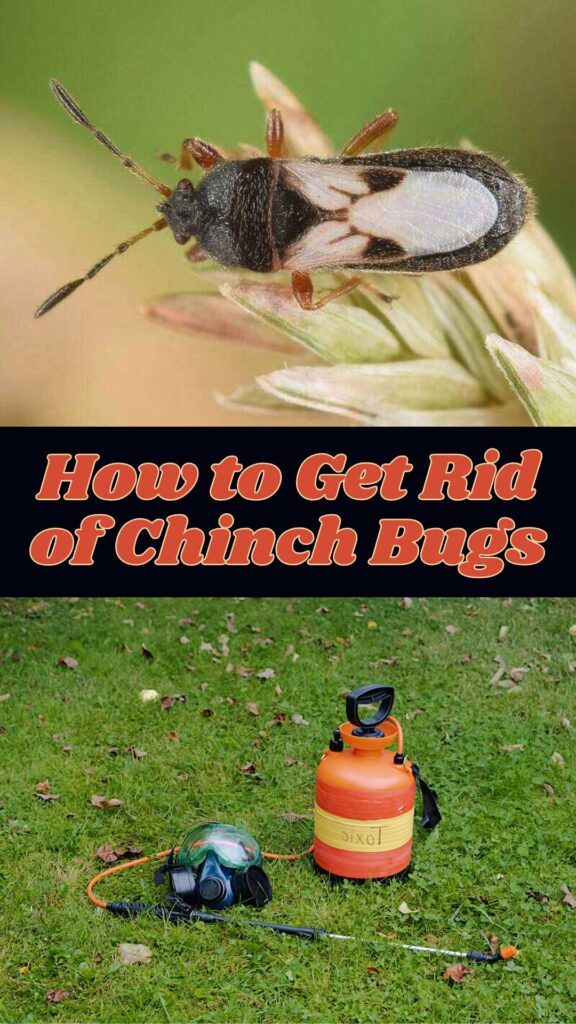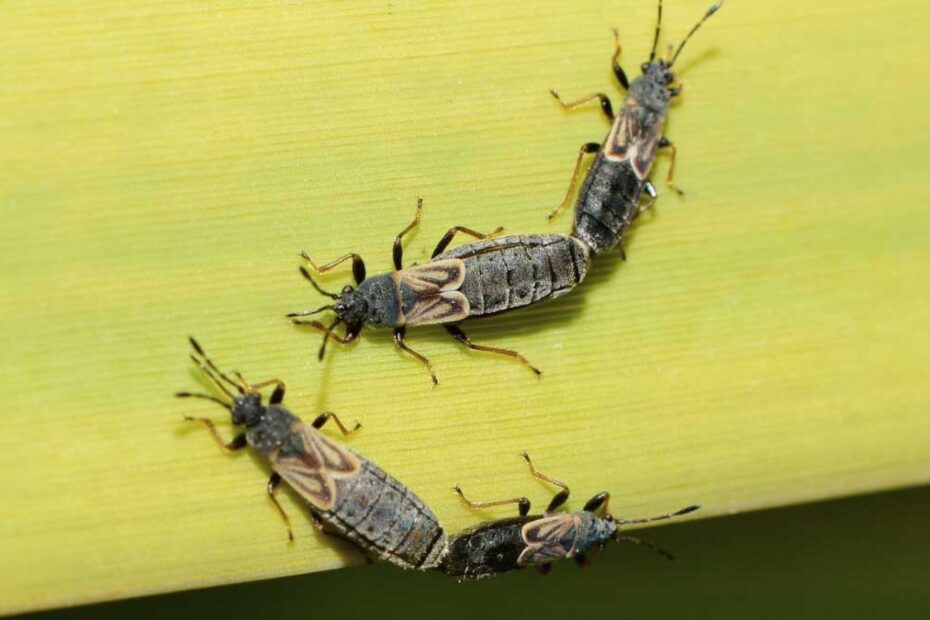If you’re noticing brown patches on your lawn, chinch bugs might be the culprits. These tiny pests can wreak havoc on your grass, turning lush green areas into unsightly dead zones. But don’t worryâyou can take action to reclaim your yard.
Understanding how to identify and eliminate chinch bugs is crucial for maintaining a healthy lawn. In this guide, you’ll learn effective strategies to get rid of these pesky insects and restore your grass to its former glory. Ready to transform your lawn? Let’s immerse.
Key Takeaways
- Identify Chinch Bug Damage: Recognize signs of chinch bug infestation, such as irregular brown patches, thinning grass, and visible bugs, to ensure early intervention.
- Lawn Maintenance: Proper lawn care, including regular mowing, adequate watering, and correct fertilization, helps prevent chinch bug infestations.
- Grass Selection: Opt for endophytic or drought-tolerant grass varieties to make your lawn less appealing to chinch bugs.
- Natural Remedies: Use biological controls like ladybugs, Beauveria bassiana, nematodes, and home remedies like soap solutions, diatomaceous earth, and garlic spray to manage chinch bugs without chemicals.
- Chemical Treatments: Choose effective insecticides with active ingredients like bifenthrin, carbaryl, or lambda-cyhalothrin, and apply them safely following label instructions.

Understanding Chinch Bugs
Chinch bugs are common lawn pests that can cause significant damage. Knowing more about them helps you manage and prevent issues.
What Are Chinch Bugs?
Chinch bugs belong to the family Blissidae and are tiny insects harmful to grass. Here are key terms to understand:
- Nymph: An immature chinch bug, typically red with a white band to start, developing into the adult form.
- Adult: An adult chinch bug is around 1/5 inch long, black with white wings folded over its back.
- Lifecycle: Chinch bugs can produce up to three generations per year, making rapid infestation possible.
Identifying Chinch Bug Damage
Identifying damage is crucial for early intervention. Look out for the following signs:
- Brown Patches: Irregular brown patches appear during hot, dry weather, often mistaken for drought stress.
- Thinning Grass: Grass thins and weakens as chinch bugs feed on the sap, disrupting water absorption.
- Presence of Bugs: Part grass blades with your hands to check the thatch level for nymphs and adult bugs.
Regular monitoring of your lawn for these signs helps in prompt and effective chinch bug management.
Prevention Methods
Preventing chinch bugs is key to maintaining a healthy lawn. Follow these methods to reduce the risk of infestation.
Lawn Maintenance Tips
Proper lawn maintenance can help prevent chinch bugs. Here are some tips:
- Mow Regularly: Keep your grass at the recommended height (approximately 2.5 to 3 inches) to prevent chinch bugs from breeding.
- Water Adequately: Water deeply and infrequently, ensuring your lawn receives 1 to 1.5 inches of water per week. Dry conditions attract chinch bugs.
- Fertilize Correctly: Use balanced fertilizers according to your grass type. Over-fertilization can encourage chinch bug activity.
Choosing the Right Grass
Selecting the right grass variety can make your lawn less attractive to chinch bugs. Consider these options:
- Endophytic Grasses: Varieties like perennial ryegrass and some fine fescues contain endophytes, beneficial fungi that deter chinch bugs.
- Drought-Tolerant Grasses: Bermuda grass and zoysia grass are more resilient to drought, making them less susceptible to chinch bug damage.
Keeping these prevention methods in mind, you can significantly lower the chance of a chinch bug infestation and maintain a lush, healthy lawn.
Natural Remedies
Natural remedies for chinch bugs offer environmentally friendly ways to control these pests without relying on chemicals. Using biological control options or home remedies, you can effectively manage chinch bug populations and maintain a healthy lawn.
Biological Control Options
You can leverage natural predators and organisms to keep chinch bug populations in check. Consider the following biological controls:
- Ladybugs: These beneficial insects consume chinch bugs and their eggs. Release ladybugs in areas with known infestations.
- Beauveria bassiana: This entomopathogenic fungus infects and kills chinch bugs. Apply it to affected areas following the manufacturer’s instructions.
- Nematodes: Beneficial nematodes such as Steinernema carpocapsae target chinch bugs in the soil. Apply nematodes to the lawn during early morning or late afternoon for best results.
Home Remedies
Several home remedies can help reduce chinch bug infestations using common household items:
- Soap and Water Solution: Mix 2 tablespoons of liquid dish soap with 1 gallon of water. Spray the mixture on affected areas to suffocate chinch bugs. Test on a small lawn section first to ensure no grass damage.
- Diatomaceous Earth: Sprinkle food-grade diatomaceous earth on infested areas. The fine powder damages the exoskeletons of chinch bugs, leading to dehydration and death.
- Garlic Spray: Crush several garlic cloves and mix with water to create a garlic spray. Apply to your lawn to repel chinch bugs, as they dislike the strong odor.
Employing natural remedies helps manage chinch bugs while minimizing environmental impact and protecting beneficial insects. Explore these methods to find the most effective solutions for your lawn.
Chemical Treatments
Chemical treatments offer a potent solution for severe chinch bug infestations. When other methods don’t yield the desired results, selecting and applying insecticides can effectively control these pests.
Selecting Effective Insecticides
Not all insecticides work equally well against chinch bugs. Look for products containing active ingredients like bifenthrin, carbaryl, or lambda-cyhalothrin. These chemicals are known for their efficacy in targeting chinch bugs.
Key Terms:
- Bifenthrin: A pyrethroid insecticide that acts on the nervous system of insects, leading to paralysis and death.
- Carbaryl: A carbamate pesticide that inhibits the enzyme cholinesterase, disrupting the nervous system of pests.
- Lambda-cyhalothrin: Another pyrethroid effective against a wide range of insect pests, including chinch bugs.
Choose a granular or liquid formulation based on your lawn’s needs and application preferences. Granular insecticides are easier to apply evenly over large areas, while liquid formulations often provide a quicker knockdown of pests.
Safe Application Practices
Applying insecticides safely is crucial to protect your lawn, household, and local environment. Follow these guidelines for safe and effective application:
- Read Labels: Always read and follow the instructions on the insecticide label. This ensures correct usage and minimizes risks.
- Protective Gear: Wear gloves, long sleeves, and eye protection to prevent direct contact with chemicals.
- Application Timing: Apply insecticides during the early morning or late afternoon when chinch bugs are most active. Avoid windy days to reduce drift.
- Even Distribution: Ensure even coverage to maximize the treatment’s effectiveness. For granular insecticides, use a spreader. For liquid formulations, use a sprayer.
- Watering: Water your lawn lightly after application to help the insecticide penetrate the soil and reach the chinch bugs.
By following these chemical treatment steps, you can significantly reduce chinch bug populations and protect your lawn from further damage.
Conclusion
Effectively managing chinch bugs is crucial for maintaining a healthy and vibrant lawn. By understanding their characteristics and regularly monitoring for signs of infestation, you can take swift action to prevent significant damage. Implementing proper lawn maintenance practices, such as mowing, watering, and fertilizing correctly, helps create an environment that’s less appealing to these pests.
Natural remedies and biological controls offer environmentally friendly options for managing chinch bugs without resorting to chemicals. But, if infestations become severe, chemical treatments can be a potent solution. Always follow safe application practices to ensure the best results while protecting your lawn and the environment. By combining these strategies, you can keep chinch bugs at bay and enjoy a lush, green lawn year-round.
Frequently Asked Questions
What are chinch bugs?
Chinch bugs are small pests that can damage grass. They feed on the sap of grass blades, causing brown patches and thinning lawns. Monitoring and early identification are key to managing them effectively.
How can I identify chinch bug damage?
Chinch bug damage appears as irregular brown patches or thinning grass. You may also see the bugs themselves on the lawn. Regular monitoring helps catch infestations early.
What are effective natural remedies for chinch bugs?
Effective natural remedies include introducing ladybugs, using Beauveria bassiana fungus, applying beneficial nematodes, and using a soap and water solution or garlic spray. These methods control chinch bugs without chemicals.
Which chemical treatments are effective against chinch bugs?
Chemical treatments with active ingredients like bifenthrin, carbaryl, or lambda-cyhalothrin are effective. Follow safe application practices, read labels, wear protective gear, and apply during optimal times.
How can I prevent chinch bug infestations?
Prevent chinch bugs by mowing regularly, watering adequately, avoiding over-fertilization, and selecting the right grass varieties, such as endophytic and drought-tolerant grasses. These steps maintain a healthy lawn less appealing to chinch bugs.
What do nymph and adult chinch bugs look like?
Nymph chinch bugs are smaller and red with white bands, while adult chinch bugs are larger, black and white, and have a characteristic X-shaped pattern on their backs.
What are beneficial nematodes and how do they work?
Beneficial nematodes, like Steinernema carpocapsae, are microscopic worms that target chinch bugs in the soil. They infiltrate and kill the pests, providing an environmentally friendly control method.
Why is regular monitoring important for managing chinch bugs?
Regular monitoring helps detect chinch bug infestations early, enabling timely intervention and reducing the extent of lawn damage.
How can I safely apply chemical treatments to my lawn?
Apply chemical treatments by reading labels, wearing protective gear, distributing evenly, and lightly watering the lawn post-application to enhance effectiveness while minimizing risks.
